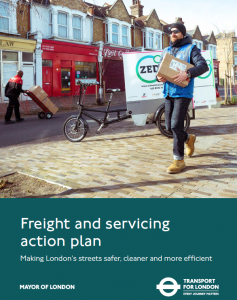A plan to work with boroughs, businesses and the freight and servicing industry aims to transform how deliveries are made in London. A part of the Freight and Servicing Action plan, which was presented by the Mayor of London and Transport for London (TfL), includes offering more click and collect points at Underground stations.
TfL is launching a tender to bid for space in their stations and open more parcel lockers across the transport and Underground network. It will also make land available for micro-distribution centers in key locations to support sustainable last-mile deliveries in neighborhoods across London, including by cargo bike. It will also encourage businesses to offer ‘green’ delivery slots, which enable consumers to choose a delivery window when drivers are already in their area.
Sadiq Khan, Mayor of London, said in an interview: “Freight is essential for London’s economy but for our future health and prosperity we need to be smarter about how we manage the millions of van and lorry journeys each week. By creating a pan-London network of micro-distribution centers and rolling out innovative click and collect points at more tube stations, we will enable more commuters to collect packages near their home helping reduce congestion across our city.”
Road safety
TfL research shows that heavy goods vehicles are involved in 63 percent of fatal collisions with cyclists, and 25 percent of fatal collisions with pedestrians, despite only making up 4 percent of the overall miles driven in London. Trucks and light commercial vehicles also account for around a third of all NOx emissions.
Together with the introduction of the Direct Vision Standard and supporting businesses to switch to electric vans and cargo bikes, London will make freight more efficient while also reducing road danger and cleaning up toxic air.
Source: TfL

